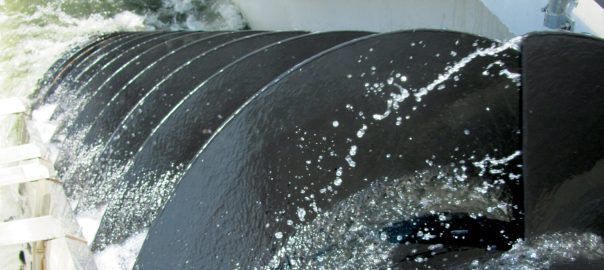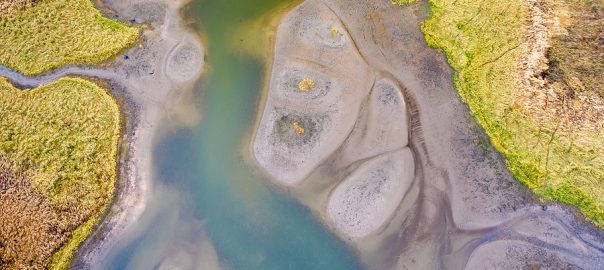
As years go by, the EPA changes and updates public water treatment requirements. It’s a district’s responsibility to keep up with those changes. As policies change, it doesn’t mean that water treatment plants are able to keep up. Lakeside Equipment is ready to help you take a closer look at what these changes mean for your water treatment district.
Colorado is one state where recent changes by the EPA are causing headaches. The EPA is adding new guidelines regarding the safe limits for PFAs (aka Forever Chemicals) in drinking water. The new policies call for a drop from 70 parts per trillion to no more than 1 part per trillion for PFOA (perfluorooctanoic acid) and PFOS (perfluorooctanesulfonic acid). These limits are too low for some labs to test for, and many water treatment plants lack the equipment needed to get the levels to those new guidelines.
It’s a problem as around 50% of Colorado’s water districts do not test for PFOA or PFOS. Of those that do, 76 have higher levels than is recommended. In one city, the PFOS level was at 3.5 parts per trillion. The cost for that city to upgrade filtration is around $10 million, and Colorado is slated to get about $321 million of the $1 billion Federal Infrastructure Bill, so only 30 or so water treatment plants will get funding to help offset the upgrades.
Has your district started looking at government grants and funding to make important upgrades to your water treatment plant? By now, it’s likely that you have. It’s time to look at all of the latest changes and what it means for your district.
The Dangers of PFOA and PFOS
The forever chemicals PFOA and PFOS are newer concerns. Over time, they affect the cardiovascular system and a person’s immune function. They also increase the risk of certain cancers, and it’s believed they impact fetal development. Some studies have found they impact thyroid function, kidney health, and reproduction.
As a result of these studies, the EPA came up with a lifetime health advisory, warning people to minimize their lifetime exposure to these forever chemicals in the water they drink, the foods they eat, and consumer products. The new drinking water advisories listed by the EPA are:
- PFOA – 0.004 parts per trillion
- PFOS – 0.02 parts per trillion
- PFBS – 2,000 parts per trillion
- GenX Chemicals – 10 parts per trillion
These forever chemicals build up in your blood. They’re found in the water, in the air, and in the soil. They don’t go away, and that’s why the EPA issued a lifetime health advisory.
Lead Pipes Are Still a Concern and Steps Are Being Taken to Get Rid of Them
Even if a water district has clean water, the pipes that carry water into homes, schools, and businesses may contain lead solder or lead pipes. The Biden-Harris Administration’s Lead Pipe and Paint Action Plan addresses lead contamination. An investment of $15 billion through the Bipartisan Infrastructure Law is earmarked to remove lead pipes across the nation.
As of 2021, around 22 million homes were getting drinking water through lead pipes. Some states have a higher risk than others. These states had the highest number of lead pipes.
- Illinois
- Michigan
- Missouri
- New Jersey
- Ohio
- Wisconsin
Every state still has lead pipes in service and that’s something that has to be addressed. The dangers of lead have been proven. Exposure to lead can cause anemia, brain damage, kidney damage, and weakness.
What Upgrades Should You Be Making?
When it comes to your water treatment district, what upgrades do you need to make? For many districts, better filtration is essential. In a home, dual-stage filters with activated carbon and reverse osmosis are effective. It’s found that reverse osmosis is the most effective method for removing PFAS. Nanofiltration is also helpful.
Sweeney Water Plant in Wilmington, North Carolina, installed granulated activated carbon filters and has been testing them since 2019. As of 2022, they now have water that’s free of PFAS. To get to that point, they spent more than $100 million. They plan to recover the money from the companies that contaminated the city’s waterways through federal lawsuits.
In Peabody, Massachusetts, a $36 million Clean & Sustainable Water Infrastructure Plan upgraded the city’s water treatment plant with new technology, an updated lab, and new filtration to remove forever chemicals from the water. They also made sure the city’s water treatment plant is ready to manage 3 million gallons per day, though they’re only currently managing around 1 million gallons daily. They made sure the plant is ready for future growth.
Lead pipes and forever chemicals are concerns, but it’s also important to look at your facility’s equipment. How old are your pumps, filtration systems, lab equipment, etc.? If you built your facility to handle a population of 100,000 and you’re now at 99,000, you may soon reach capacity. What happens then?
What filtration are you using? Many plants are finding the best success with granulated activated carbon. GAC filters are doing a good job removing PFAS, so you want to look into those. While you’re making those upgrades, make sure your lab is able to test for forever chemicals. The easier it is to check your levels quickly and accurately, the better it is for your community.
While you’re making changes to your filters, pumps, and upgrading equipment, consider future growth. What if there’s a boom in growth due to a new apartment complex or building housing office space? If you can plan your changes around population increases, it’s beneficial.
Are you in an area prone to storms? If your water treatment plant is in any way connected to wastewater treatment or storm runoff, you have to factor in climate change, too. Storms may worsen, so plan around those changes. You don’t want to end up with a water system that’s contaminated in a flood, extremely heavy rains, or sudden snow melt.
Energy-Efficient Upgrades Save Money
No upgrade should be considered without also considering ways to save money. If you could install solar panels or wind turbines to help power your water treatment plant, you save your district members money. Those savings pay for the upgrades over time. It’s worth taking a closer look at new equipment that saves money by using less power, pairs with alternative energy sources, or is low-maintenance.
Work With An Expert to Plan the Best Changes for Your Water Treatment Plant
These are some of the changes plants around the nation are making. What steps should you take? The best way to plan for growth and changing water treatment requirements is by working with an expert in water treatment. Lakeside Equipment has been in the industry for close to 100 years.
Our company’s been in water treatment since 1928 and strives to help every community have clean, safe drinking water and waterways. Talk to our water treatment experts to learn more about the best upgrades for your district’s drinking water. Lakeside Equipment works with your budget and helps you determine the responsible way to grow your water treatment plant, better clean the water, and keep cost increases down for your community members.





